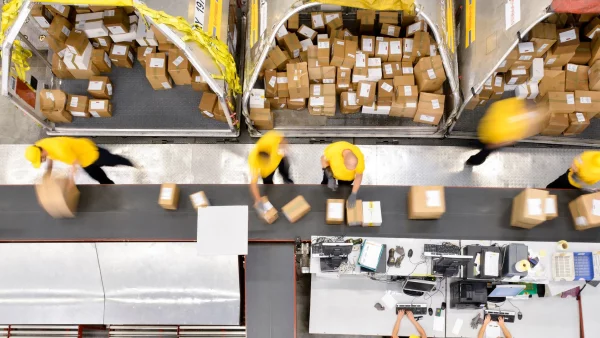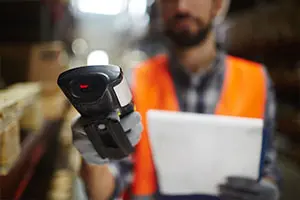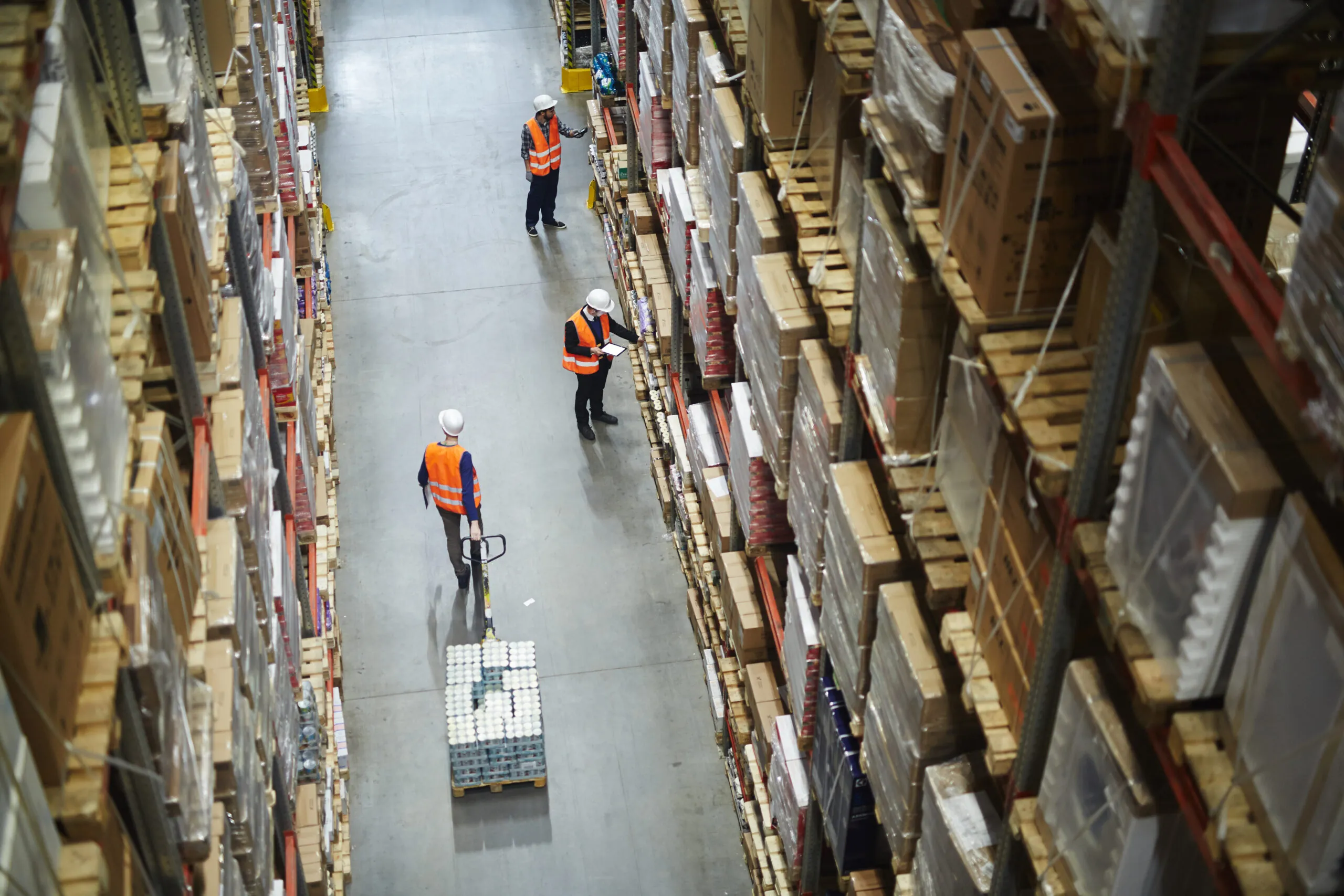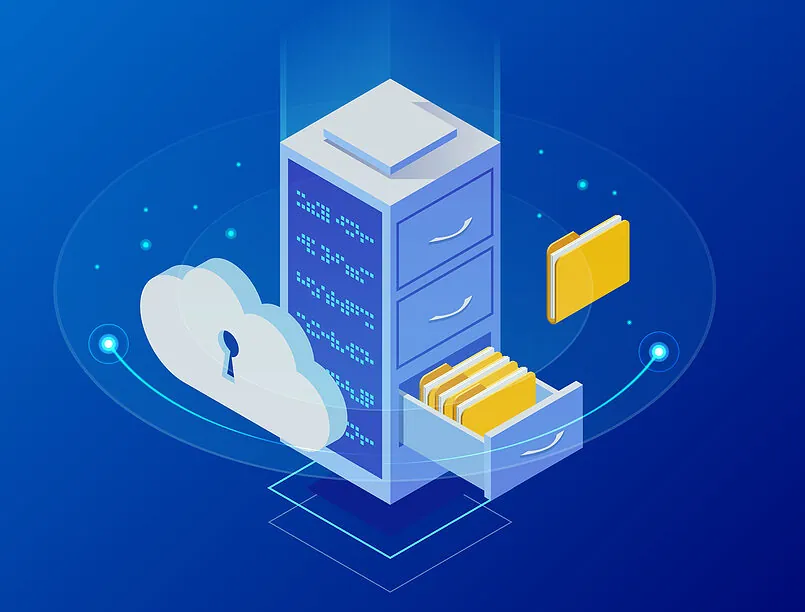
Everything You Need to Know About Mobile Barcoding and Data Collection for ERP
Too many companies still rely on manual data collection processes for handling inventory. Tracking inventory in the warehouse, shop floor or out in the field using paper checklists, spreadsheets, data entry into the ERP, or using no system at all, is not effective. Moving material by hand is inaccurate, creating distrust in stock levels.
Lost product and soaring overhead become the norm. In today’s pandemic world, these inefficiencies can affect the very survivability of your company.
To overcome these challenges, inventory-heavy businesses are introducing barcode automation into their operation. However, an aging or under-performing warehouse barcode system can become inefficient.
Mobile barcoding for ERP is the modern standard for supply chain operations. The digital enterprise is built on data, making flawless data collection a foundational technology in digital transformation initiatives.
With mobile barcoding solutions, businesses lower costs while increasing accuracy, visibility, efficiency, and productivity, along with many more benefits.
In this article, we will do a deep dive into what mobile barcoding is, how it fits into your enterprise, and what results you can expect in terms of KPI improvements and future growth.
What is Mobile Barcoding?
Mobile barcoding is a type of advanced mobile data collection for ERP that combines three technologies into one:
- A barcode system to automate data collection,
- Enterprise mobility that extends ERP to the point-of-work, and
- Mobile inventory software with additional functionality.
Automating the data collection process at key stages throughout your facilities enables you to move, track and analyze inventory accurately and in real-time, even across multiple locations.
Barcoding leverages automatic identification and data capture, or AIDC, to collect inventory data with perfect accuracy. Barcodes and RFID tags can be used to track fixed assets, raw materials, WIP materials, spare parts, tools, consumables and more.
By equipping your workforce with enterprise mobile devices, your team can scan barcodes wherever they work. Mobility also boosts sustainable social distancing for essential employees on the front line.
Cutting-edge barcode software can then communicate scanned data to transact against your ERP as work occurs. It also provides a mobile platform that can be expanded to accommodate business growth in multiple operation types—a concept known as “extensibility.”
Together, mobile barcoding solutions provide digital process automation for previously manual workflows. Mobile automation squeezes out human error, inefficiency, and lack of visibility, as well as the time lag between when work is performed and when that data is updated in the ERP.
Why Use Mobile Barcoding?
Mobile barcoding offers more than a basic barcode solution at the receiving dock. Mobile barcoding takes this several steps further.
Unlike traditional data collection solutions, mobile barcoding can be easily “extended” to incorporate new and advanced functionalities. Extensible add-ons include offline mobility for continuous operations, pick routing and low-code mobile app development for the supply chain.
Mobile barcoding software can help businesses eliminate bottlenecks in multiple areas, such as:
- Shipping & Receiving
- Purchase Order Processing
- Sales Order Processing
- Inventory Visibility
- Cycle Counting
- Warehouse Management
- Demand Forecasting
- Fixed Asset Management
- Employee Time Management
- Plant Maintenance and Repair (MRO)
- Compliance and Traceability
Benefits of Mobile Barcoding for Data Collection
Mobile barcoding and data collection solutions generate multiple benefits for supply chain operations. These include:
- 99.9% accuracy and above
- 25% increase in efficiency
- 30% increase in productivity
- 80% shorter training periods
- Sustainable social distancing
All of these improvements augment worker capabilities, increase throughput and output, and reduce overhead costs. This naturally leads to a faster return on investment, or ROI. Greater profitability follows.
However, the five crucial areas that stand to gain the most benefits from mobile data collection and barcodes are:
1. Boost Data Accuracy to 99.9% and Above
The modern supply chain runs on data. The more accurate your data is, the more efficiently and successfully your operation runs. But with manual data collection, experts estimate that data accuracy will never exceed 60%.
Automating data collection with mobile barcoding, however, can deliver perfect or near-perfect accuracy. For example, IT services company CyberCore achieved world-class accuracy of 99.999%.

Why Accuracy Matters
2. Drive Efficiency, Productivity, and Throughput
With manual data collection, the only way to increase efficiency is to add more labor. In an industry fraught with skilled labor shortages, this is often not an option. The COVID-19 pandemic only exacerbated this challenge.
Plus, the repetitive, error-prone nature of manual data collection leads to workplace injuries and low worker morale, reducing worker retention. Productivity and overhead suffer.
By empowering workers with ergonomic, intuitive mobile apps and devices, you reduce repetitive, cumbersome manual tasks to boost efficiency and productivity. Their tools travel with them to where the work is.
This means a smaller workforce using mobile barcoding accomplishes as much, if not more, than an equivalent size team using manual data collection methods.
And by reducing labor costs, you’re able to allocate saved funds to other essential projects.

How Mobile Barcoding Drives Supply Chain Efficiency
3. Reduce Overhead Costs
Optimizing performance throughout your operations can help realize positive upstream and downstream effects. These can directly reduce material costs and excess overtime expenditures.
Having 100% visibility into your inventory levels at any given time means you can stock “just enough,” reducing historic reliance on overstock or safety stock by 10-15%.
You can also reduce expedited shipping costs associated with unanticipated shortages or misplaced inventory.
In addition, intuitive mobile solutions can also reduce training times associated with seasonal or new hires by as much as 80%.

Learn the Hidden Costs of Manual Cycle Counting
4. Increase Customer Satisfaction and Return Rates
The Amazon Effect has caused end users to expect perfect order accuracy, fast delivery, and transparent processes. If you can’t deliver this every time, today’s hyper-competitive market means unhappy customers will simply go elsewhere.
If another vendor can fulfill their needs because they use mobile barcoding, this challenges your very ability to remain operational.
With mobile barcoding, your workers have access to ERP data right in the palm of their hand. They can also trust that inventory levels are correct. Fewer double and triple checks are needed prior to shipping. This translates into orders that are accurate and picked and shipped on time, reducing costly returns or chargebacks, and raising customer service to a new level.

Get Ready for 1-Day Shipping with Mobile Barcoding
5. Stay Competitive into the Future
With manual processes, you have to add more labor in order to scale production. Without real-time data you can trust, you also lack the rapid insight needed to adapt processes as new challenges arise, as seen most recently with the COVID-19 pandemic.
Companies already equipped with mobile barcoding and other digital technologies were able to make the pivot to remote work and social distancing more easily, putting those without even further behind.
Now, even the mobility laggards that failed to digitize before the pandemic are modernizing as well. Failure to prioritize mobile automation at this point could mean the inability to stay competitive.
By digitally automating your data collection processes, however, you gain the ability to adjust quickly. Agility is necessary when unpredictable changes are so prevalent.
More than that, an extensible foundation enables you to adapt to unforeseen challenges, secure bigger contracts and scale growth into the future.
Mobile Barcoding Supports Sustainable Social Distancing
COVID-19 has brought a unique set of challenges for supply chain companies. Not only remote administrative and IT staff, but the sudden burden of managing enhanced sanitation and social distancing.
Supply chain companies have had to make significant modifications to their workflows to keep on-site essential workers safe.
Manual data collection practices are unsanitary in the pandemic era. Nor is it social distancing compliant. Typing into shared computer workstations, using hand-to-hand paper transfers, or entering shared workspaces in close proximity is simply not tenable.
Companies that failed to modernize and automate prior to the pandemic were ill-equipped to manage this transition.
That’s why companies are turning to mobile barcoding and data collection technology to meet social distancing challenges. Mobile barcoding is uniquely positioned to facilitate COVID-19 safety by:
- Eliminating hand-to-hand paper transfers or shared workstations to reduce the risk of virus transmission.
- Supporting long-range barcode scanning of 50 feet or more to reduce the physical closeness of your workers.
- Augmenting employee capabilities to compensate for smaller, socially distanced shift staffing.
- Enabling remote communication between your workforce and management team, reducing the need for onsite or in-person meetings.
- Providing 100% visibility into workflows, so management and IT can easily oversee the warehouse or shop floor remotely.

How Mobile Barcoding Helps You Adjust to the New Normal Supply Chain
Where to Use Mobile Barcoding
Mobile barcoding can be used in any enterprise setting or operation type that handles inventory, assets or consumables. This includes supply chain companies that utilize:
- Distribution and Warehousing
- Process and Discrete Manufacturing
- MRO and Asset Management
- Vertical Integration
- Single or Multiple-ERP Environments, On-premise or in the Cloud
- Multinational and International Operations
- 365/24/7 Continuous Operations
Mobile barcoding can also be used both inside and outside the four walls, even in areas with limited or intermittent network connections.
Numerous industries already use mobile barcoding technology in their daily operations. This includes:
- Aerospace and Defense
- Automotive
- Chemical
- Construction
- Food and Beverage
- Manufacturing
- Mining and Metals
- Oil and Gas
- Pharmaceuticals
When to Use Mobile Barcoding
How do you know when it’s the right time to add mobile data capture technology to your warehouse? Look for these warning signs:
- Accuracy is a Major Challenge. Human errors are causing shipping delays, incorrect orders, returns and chargebacks. Over or understock is driving up overhead costs.
- You Want to Better Leverage Other Technologies. You need to optimize data for your ERP, WMS or other business systems.
- You Need to Scale for Future Growth. Labor shortages plague supply chain industries. If you want to win bigger contracts or scale your operations, you need automation technology.
- You Want to Migrate to a Cloud Infrastructure. The automated workflows included with mobile barcoding allow your operations to keep its complex workflows not supported by ERP cloud platforms.
- Time Management Becomes a Problem. You spend too much time fixing errors or performing extra tasks, leading to overtime expenses.

What You Need to Know Before Adding a Mobile Data Collection Solution
ERP Data Collection Software
Relying on just barcode scanners and mobile hardware isn’t enough. You also need mobile barcode software to maximize the effectiveness of this hardware and its ability to communicate with your ERP.
Mobile barcoding provides live, two-way communication between core business systems for 365/24/7 inventory control and WMS-lite functionality. It’s also easier and more intuitive to use for your workforce than legacy systems.
RFgen mobile barcoding solutions provide certified or validated integration with many major ERPs, including:
- SAP
- Oracle SCM Cloud
- Oracle E-Business Suite
- Oracle’s JD Edwards
- Deltek Costpoint
- Microsoft Dynamics
The functionality of mobile ERP software is created through mobile apps purpose-built for supply chain transactions.
RFgen’s industry-best mobile app suites are pre-built, pre-tested and ERP-validated. Pre-made “Open Source” mobile supply chain apps drastically shorten implementation times and accelerate time to deployment for rapid ROI.
Even complex logic can be easily tailored to suit without having to build an entire solution from scratch.
Common supply chain transactions mobilized by the open-source include, but are not limited to:
- Inventory Management: Cycle Count, Inventory Issue, Inventory Transfer, Location Inquiry, and more.
- Purchase Order: Receipts by PO, PO Inquiry by Item/Line, Receipt Routing, etc., and more.
- Sales Order: Sales Order Inquiry by Item/Line, Pick Confirm, Ship Confirm, Proof of Delivery, and more.
- License Plating: Cycle Count, Attach/Detach Item, Pick Confirm, License Plate Inquiry, and more.
- Work Orders: Component Issue/Scrap, Work Order Inquiry, Work Order Time Entry, and more.
- Kanban Manufacturing
- Warehouse Management: Pick Confirm by Item/Sales Order/Pick Number/Task, Manual Replenishment, Put Away, and more.
- Advanced Warehousing: Directed Picking, Directed Putaway, Directed Replenishment, License Plating, Containerization, multiple picking methods, IIoT integrations, and more.
- Equipment and Plant Maintenance: Component Issue, Information Entry, Location Transfer, and more.
- Fixed Assets: Cycle Count, Create Fixed Assets, Fixed Asset Disposal, and more.
- Human Resources: Time In/Out
And others, depending on your ERP.
How to Implement Mobile Barcoding
The best practices for implementing barcoding software include finding a company that offers end-to-end guided implementation to help streamline the process and lead to you a successful Go-Live. The company should also have experience implementing similar solutions for other businesses in your industry and with a similar ERP.
When looking for a mobile barcoding solution provider, make sure they can meet the following requirements:
- They have documented experience in an industry similar to yours.
- They can offer seamless and certified integration with your preferred ERP system.
- They offer flexible support including training, consulting services and 24/7 global support.
- They can provide quick and worthwhile ROI.
- They can help you build a winning technology business case.
Taking the time prior to implementation to examine your workflows and business processes will help you find added value in your implementation.

Your Guide to a Successful Barcode Implementation with RFgen
You will also want to consider how your workforce may respond to using a new technology. If you think you might encounter resistance, do some research on how to increase employee buy-in for your new mobile barcoding software.
Finally, you will also want to consider security measures, such as barcode encryption. Your new automated data collection solution should be able to collect data accurately and securely. It should also restrict access to that data to only those with appropriate permissions. This is especially important for industries that necessitate government or contractual compliance.
Expanding Mobile Barcoding Beyond Receiving
Mobile barcoding doesn’t just track inbound inventory in receiving. The data collection portion of mobile barcoding and data collection includes the ability to directly integrate with RFID, PLCs, IoT/IIoT and Industry 4.0 devices, co-bots, autonomous vehicles and more for even greater inventory oversight.
For future-focused companies, some of these integrations is a necessity.
Mobile barcoding can also easily harmonize with automated material handling systems, or AMH, including conveyors, sorters and other physical machinery. The AMH can be equipped with barcode scanners to scan and transact at specified junctions, such as routing material to shipping, just as your workers do with mobile barcode scanners.
The best mobile barcoding software can collect and communicate data to virtually any device or software systems, from scales and co-bots, to manufacturing execution systems (MES) or other ERPs. It will also augment your data collection continuity with offline and field mobility when network connectivity or connection to the primary ERP is unavailable.
For example, real-world supply chains already use a combination of these data collection sources in multiple operation types, such as:
- Inventory and Yard Management. Increased visibility and control over general inventory, fixed assets, WIC, raw materials, spare parts and more.
- Warehouse Automation. Optimized workflows to cut costs and increase throughput.
- Shop Floor Data Collection. Real-time visibility and traceability throughout your workflow for process manufacturing and shop floor control.
- Asset and Spare Part Management. Tracking high-value assets and spare parts with barcodes minimizes lost materials, reduces overstock and ensures uptime.
Many supply chain companies also augment their barcode solutions with advanced or complementary systems. For example:
- License Plating, for intelligently grouping inventory into license plate (LP) barcodes.
- Offline/off-network mobility for field services and remote data collection.
- WMS-alternative solutions for advanced warehousing and directed movement.
- Enterprise asset management (EAM) solutions.
- Voice-picking solutions for high-volume, high-performing operations.
Advanced solutions for offline data collection and field mobility make mobile barcoding especially appealing for the 24/7 supply chain.
Low Code Development for Barcode Software
Mobile apps are the prebuilt logic for conducting an ERP transaction at point of work using a mobile device.
Mobile Barcode App Development
A low code mobile app development platform (MADP), like RFgen Mobile Development Studio, lets you take full control over your mobile barcoding solution in-house. For those companies with small or limited IT resources, the ability to have full control over the destiny of their solution can be critical.
Simple low-code tools reduce or eliminate the need for mobile barcoding admins to rely on a third-party vendor for even minor modifications, let alone creating and testing new mobile apps.
Built on supply chain and industry best practices, RFgen Mobile Development Studio empowers IT with the ability to quickly create mobile apps with 70% shorter development cycles.
Using modern design principles and easy drag-and-drop with pre-built logic blocks, IT staff can build on existing RFgen Open Source for common supply chain transactions or make and modify their own.
Today’s pandemic era means that IT teams are struggling to keep up with your organization’s technical needs. RFgen Mobile Development Studio reduces this burden, so you can better allocate IT spend and time to manage these internally or through experienced consultants.
Mobile App Development Use Case: GCC
Global cement and concrete manufacturer, Grupo Cementos de Chihuahua implemented RFgen Mobile Foundations to automate 95% of its warehouse transactions and reduce on-hand inventory by 10%+.
A major selling point for Eduardo Lozano, Procurement Planning and Control Manager for the company, was the easy-to-configure apps and forms using the included low code Mobile Development Studio:
“When we acquired S/4HANA, Fiori came in the bundle, but it’s not as easy as plug-and-play,” explained Lozano. “Fiori is more complex, requiring specific people with knowledge of ABAP. It’s definitely not as easy as RFgen to configure.”

How GCC Mobilized and Took Back Control In-House
Mobile Barcoding Hardware for Barcode Scanning
Choosing the right mobile hardware for your operation type is crucial to avoid interruptions in data collection.
First, you will have to decide if would like to use enterprise-grade or consumer-grade devices. Making the correct choice can impact user adoption rates, total cost of ownership (TCO), and whether you buy smartphones and tablets, mobile handheld computers, or basic barcode scanners.
Older workforces may prefer the physical keyboards and larger screens available on enterprise grade devices. Younger workforces may prefer the recognizable UI/UX of consumer grade devices.
If you have high volume work or operate in a harsh environment, you may need to look at ruggedized options. Ruggedized enterprise hardware have fewer internal parts, thicker casing, and rubberized shock-resistant corners to make them more drop, dust and moisture resistant. This makes them ideally suited for environments like outdoors, high heat, freezers, dusty or wet environments, and more. They’re also purpose-built for barcode scanning speed and volume.
Enterprise devices also typically come with maintenance and upgrade packages for more support, as well as offer more security options.
Also Read: Crash Course in Enterprise Mobility Hardware »
Other types of enterprise hardware you may want to consider include:
- RFID solutions. RFID is another form of automated data collection that can lead to even greater gains in inventory and asset visibility and efficiency.
- Mobile barcode printers. Mobilize your workforce further with programmable PM series smart printers. Mobile barcode printers should offer seamless integration with your mobile barcoding solution and ERP without needing a desktop computer.
- Industry 4.0 technology. IoT/IIoT, robots, cobots, self-driving vehicles and more can integrate with mobile barcoding to boost efficiency gains.
When searching for a mobile data collection and barcoding provider, look for one that offers an all-in-one solution of software and a wide range of enterprise hardware options.
Conclusion
Relying on obsolete manual inventory tracking methods is no longer feasible. Not only are manual methods inefficient and cumbersome, they also promote COVID-19 and other virus spread through hand-to-hand paper transfers and shared workstations. Omnichannel operations can’t survive without digital inventory tracking.
Mobile barcoding automates manual data collection through a combination of a barcode system, enterprise mobility and mobile inventory software. This allows you to extend your ERP to point-of-work for real-time data collection with maximum accuracy.
By mobilizing data collection, companies can boost efficiency, productivity and visibility while supporting social distancing needs in the supply chain.
Mobile barcoding is already used in a wide array of industries that handle inventory, both inside and outside the four walls. Certified integration with major ERPs and the ability to interface with other business systems and Industry 4.0 devices to enable unprecedented flexibility.
Extensibility and short ROI make mobile barcoding and data collection solutions viable in virtually any operation.
A low-code mobile app development platform empowers mobile barcoding customers to create and tailor mobile apps without the need for third-party vendors.
As more companies prioritize automation and digital transformation initiatives, those that fail to do so will fall further behind. Automating data collection with mobile barcoding is your first step to modernizing into a digital enterprise, laying the foundation for future growth and profitability.







